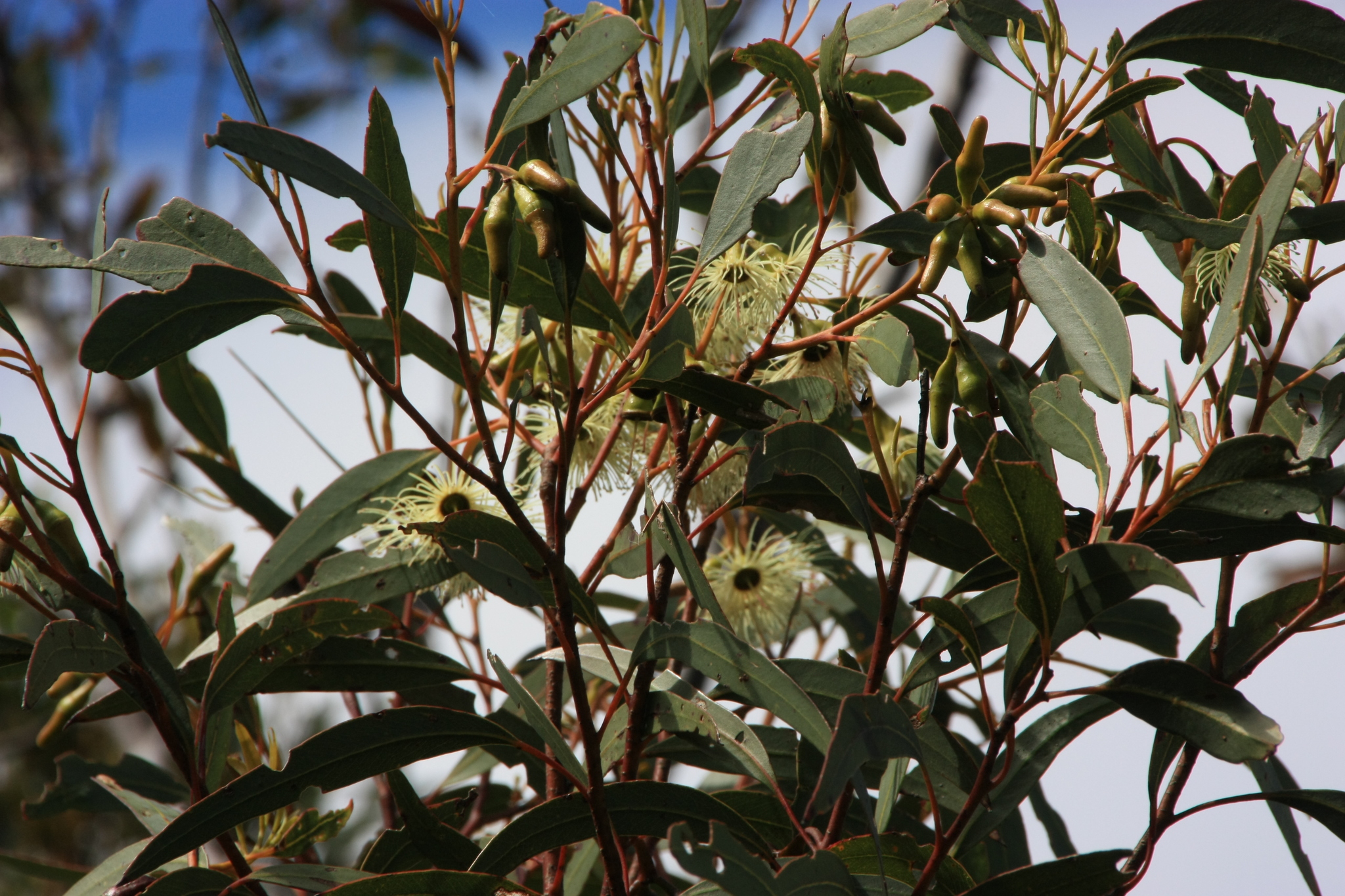
Tree mostly less than 10 m tall. Bark smooth throughout, brownish or grey over orange, peeling. Branchlets with oil glands in the pith. Juvenile leaves round. Adult leaves lanceolate; blade mostly 8–11 cm long, 1.4–2 cm wide, green, glossy, venation faint. Leaf stalk 1–2 cm long. Flower clusters axillary, 7-flowered, bud scar obscure, common stalk flattened and curved, 1.5–3.5 cm long; individual flower buds 1–2 cm long, stalks 5–8 mm long. Fruits with fine lines or sometimes 2 ridges, 8–12 mm long, 6–10 mm wide.
Grows naturally on hills, flats, woodland and open forest in SW WA. May be found in parks and schoolgrounds.
WA. Naturalised in Victoria, where known from a single population near Bacchus Marsh.
Bark with orange colouration; leaf glossy, venation faint; flower buds horned, 1–2 cm long; fruits bell-shaped on curved, flat stalk. The similar E. occidentalis has a black rough-barked sock at the base of the trunk.
Source: (2002). Eucalyptus. In: . Horticultural Flora of South-eastern Australia. Volume 3. Flowering plants. Dicotyledons. Part 2. The identification of garden and cultivated plants. University of New South Wales Press.
Updated by: Val Stajsic, November 2017
